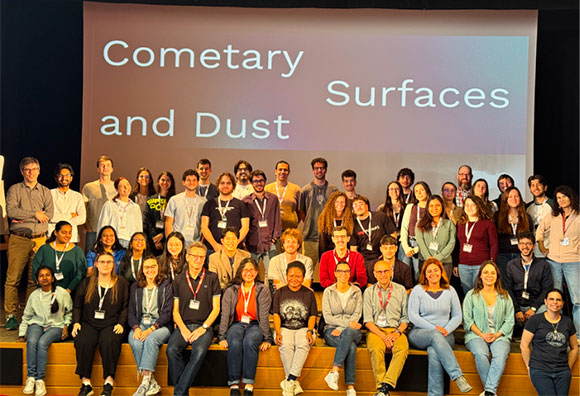The Lucchin Schools Return
This past Saturday, 2025 May 31st, marked the conclusion of the first edition of the renewed INAF PhD School “Francesco Lucchin,” held at the Millepini Congress Center in Asiago. Titled “From the Solar System to High-z Galaxies”, the school signals the restart of one of Italy’s most important training initiatives for young astrophysics researchers, reviving a tradition that contributed to the development of the Italian scientific community for over three decades.
The Lucchin Schools, first established in 1991 at the initiative of Francesco Lucchin — a renowned cosmologist and a central figure in the growth of Italian astrophysical research — and later named in his honor, became a longstanding benchmark for the education of PhD students across Italian universities and research institutes. From the inaugural session in Monteporzio (Rome), “Stellar Astrophysics – Active Galactic Nuclei”, to the last one held in Bertinoro (Bologna) in 2016, over 50 schools were organized. These were structured in biennial cycles, each focusing on orthogonal topics to foster cross-disciplinary dialogue and collaboration between different scientific communities.

This was the tenth time a Lucchin School was hosted in Asiago. This edition revives the original spirit of the initiative: to offer PhD students a broad, cross-cutting educational experience — beyond the increasingly narrow focus of academic research. The school aims to achieve two main goals: to present the state of the art in both theoretical and observational astrophysics, and to build networks of scientific collaboration that will support young researchers throughout their careers.
The school was officially opened by the President of INAF, who, visibly moved, emphasized the Institute's strong commitment to reviving this format as an essential tool for shaping the next generation of astrophysicists. “The sine qua non condition for relaunching the Lucchin Schools,” he stated, “was preserving the interdisciplinary approach that has made them so unique within the educational landscape.
The figure of Francesco Lucchin, to whom the schools are dedicated, remains central in the collective memory of the scientific community. Born in 1944 in Santorso (Vicenza), he earned his degree in 1968 under the supervision of Professors Bertola and Dallaporta. He was a pioneer in theoretical cosmology in Italy and played a key role in forming an influential research school in the field. In addition to serving as Director of the Department of Physics at the University of Padua, he was also a founding member of the institution that would later become INAF. Lucchin passed away prematurely in 2002, leaving behind a lasting scientific and human legacy.
With a three-year program already in the works, the new INAF PhD Schools “Francesco Lucchin” are expected to return on a semiannual basis. The next session is already scheduled for late October in Agerola (Napoli), promising another week of scientific immersion and vibrant exchange among brilliant young minds.
The revival of this initiative is not just a tribute to the past — it is a strategic investment in the future of Italian astrophysical research.




